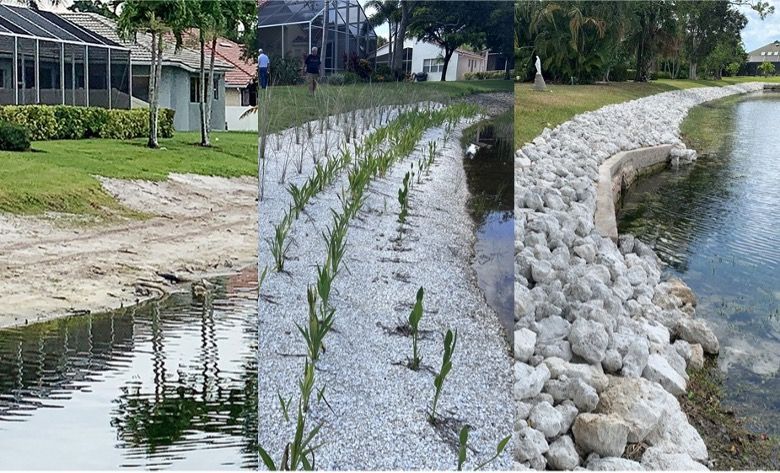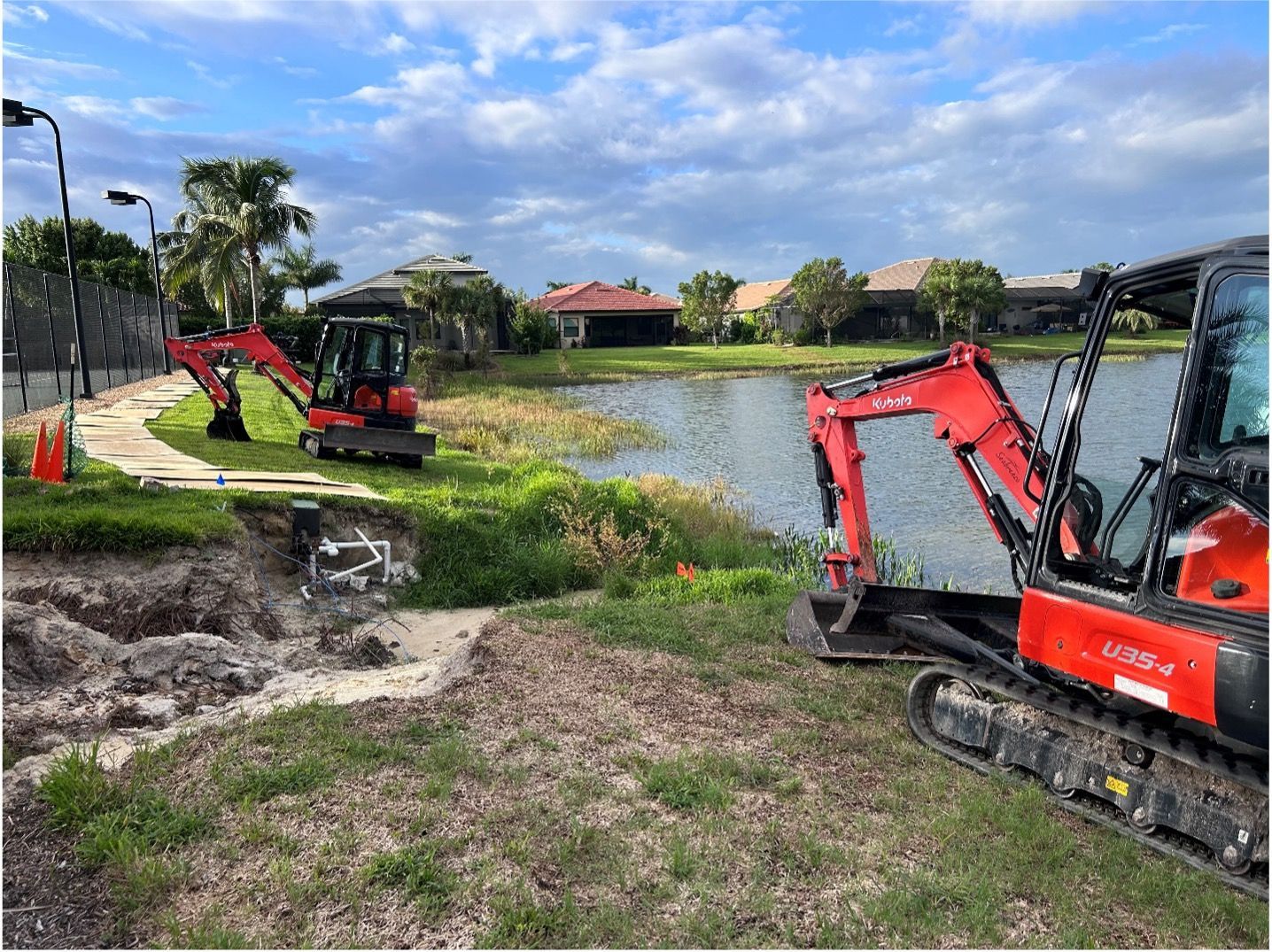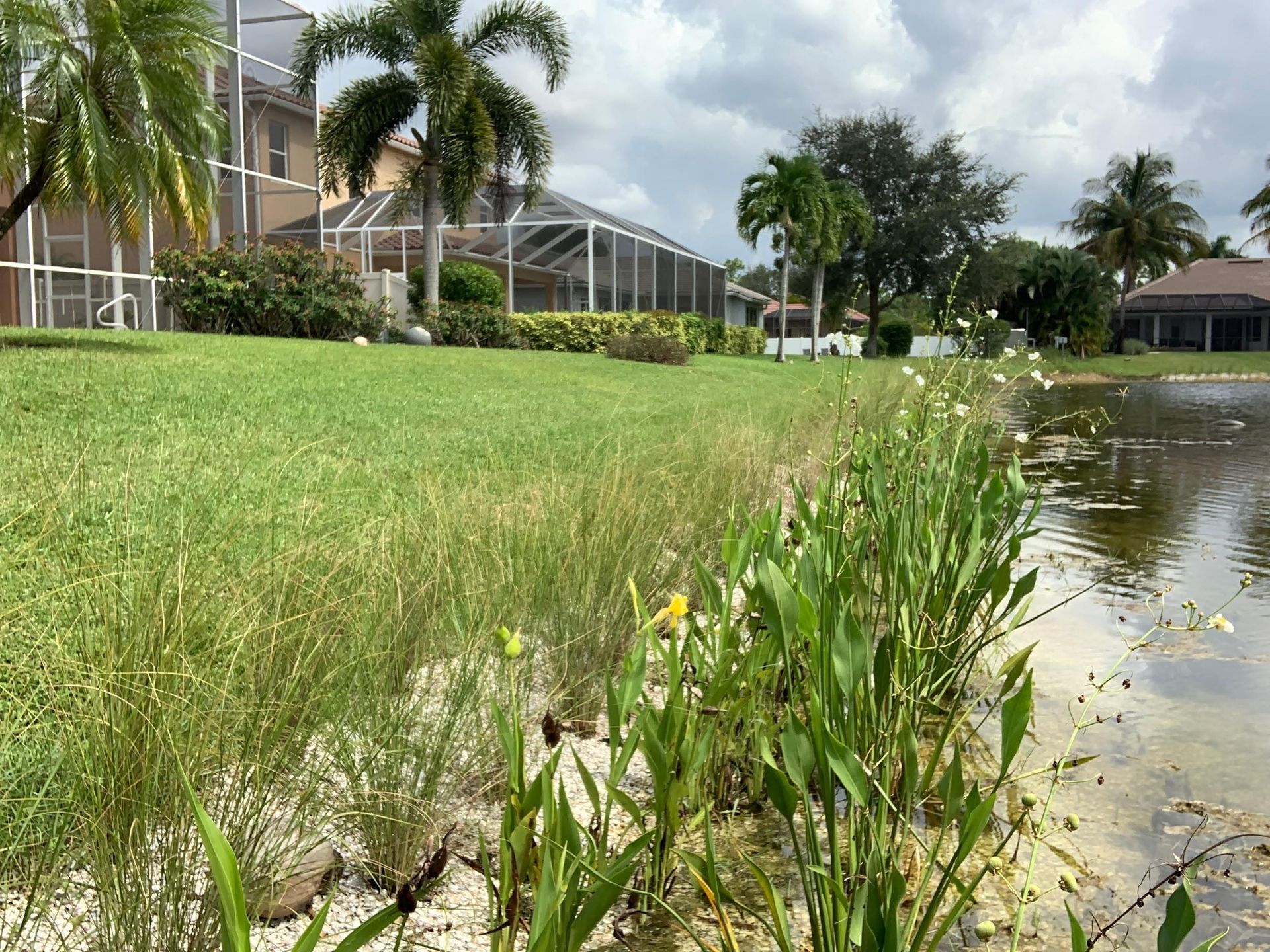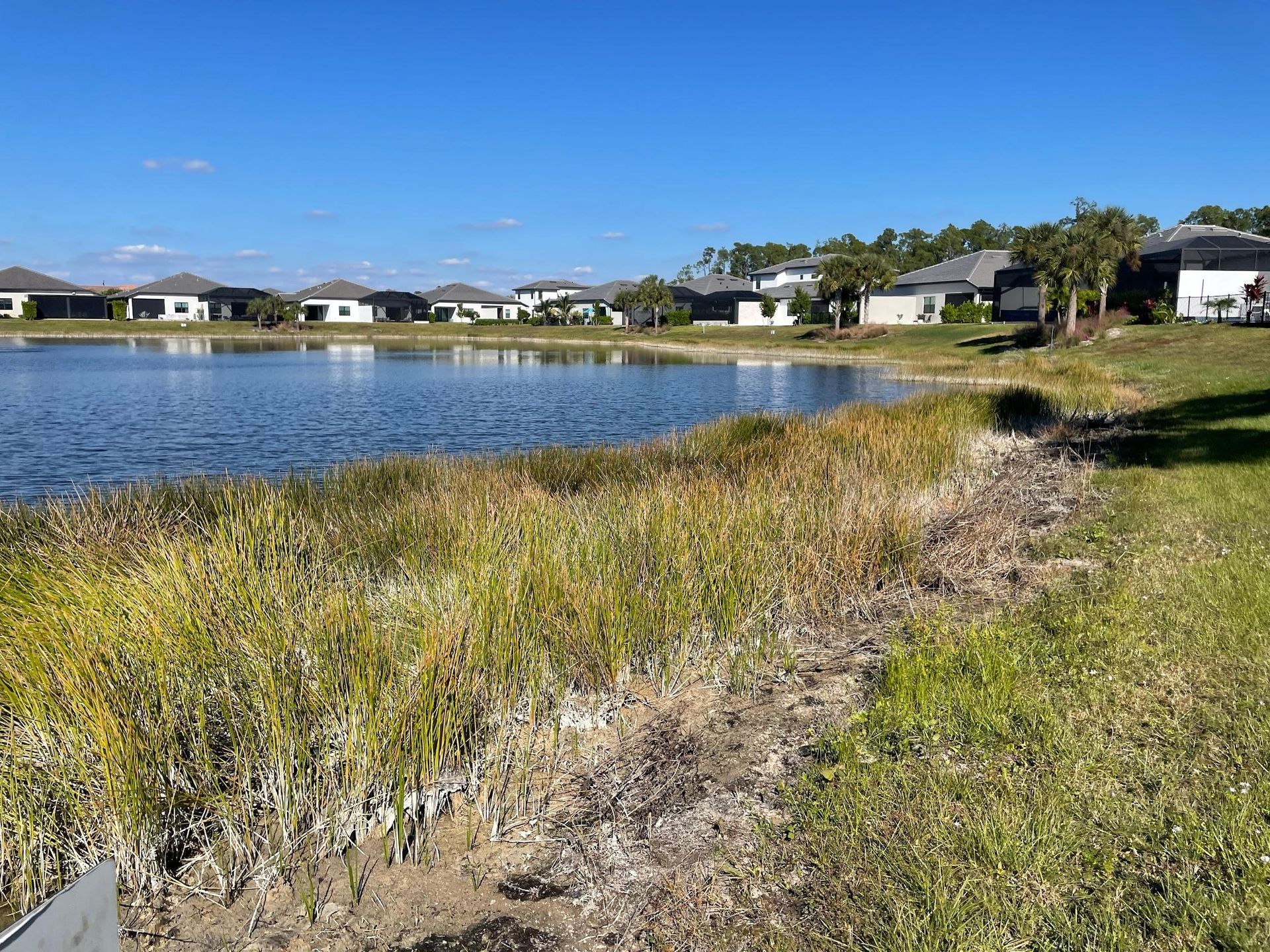Hydrogeology
Hydrogeology is the area of geology that deals with the distribution and movement of groundwater in the soil and rocks of the Earth's crust. The terms groundwater hydrology, geohydrology, and hydrogeology are often used interchangeably.1 This is a hyper-focused field of research that deals directly with erosion and its effects on ponds, lakes, rivers, canals, and streams. The root word is hydro (water)- geo (earth)- ology (the study of).
In the field of erosion control it is important to analyze where water is coming from so that the root of the problem can be addressed. Then, it must be determined how the water is eroding the earth underneath it. Is there a lack of stabilizing ground-cover such as sod, mulch, or matting? Is the soil loose and uncompacted? How quickly does the water move over land? Unless these questions are addressed, you may be coming up with a plan or installing a system that is going to be less effective at erosion control.

Above: Left picture is an unprotected shoreline that has been damaged by the effects of erosion, creating a steep slope, loose soil, and dead sod. Middle picture shows a shell system with plants that help mitigate the effects of minor to moderate sheet flow. Right picture is rip rap rock which will help control erosion on shorelines that are subject to heavy sheet flow and concentrated water run-off. Thus, an erosion control solution must be customized to the particular hydrogeological conditions of each shoreline.
It is for these reasons that most counties in south Florida follow the Water Management District rule for having a 4:1 slope on lake and pond banks (which has recently been modified once again to require a 6:1 slope). A 6:1 (pronounced “six-to-one”) slope is flatter than a 4:1 slope, thus the effect of water movement over the slope renders less erosion, in general, because it is moving more slowly. If a lake, pond, river, or canal shoreline has a 2:1 slope or a 1:1 slope, water will cascade freely and have a greater “pull” on each individual component in the soil (silica, silt, clay, rock, organic matter, shell, etc). Additionally, soil that has a high silica or silt content tends to not compact as well and tends to erode more freely.

Above Picture: Concentrated water flow, coupled with a very high silica sand content in the soil, led to this catastrophic failure in the earth just above this lake in Bonita Springs, Florida. The cavity must be filled in properly and according to specifications developed by a hydrogeologist, otherwise it will fail (which is exactly what happened here- we had to fix the previous contractor's failed repair.
A civil engineer will have a good general knowledge of hydrogeology, but may bring in a more specialized hydrogeologist if needed- to make further determinations. Often, a bathymetric survey will reveal any surficial aquafers that exist at the bottom of a lake or pond- these must be understood and protected so as not to disturb them. Hydrogeologists also study the effects of wells, mines, and other construction activity that affects the earth around it.
In mines and tunnels, water is frequently found seeping into the excavation. This may raise safety concerns during and after construction. Ground water often plays a role in triggering landslides and rockfalls. Too much water from rain or ground water can increase the pore water pressure in surface sediments and bedrock to the point that these materials fail. Water freezing in rock fractures can expand and trigger rockfalls. Sometimes it is not the water itself but the absence of water that causes a problem. In some places, pumping water out of the ground for use elsewhere removes part of the ground support, causing subsidence. When subsidence occurs in populated areas, there is a concern for property loss and injuries. Hydrogeologists can help identify situations where these hazards may occur and they can be part of a team to remediate these situations when they do occur.2
1 From Wikipedia.com
2 From https://www.aegweb.org/hydrogeology
Recent Posts






